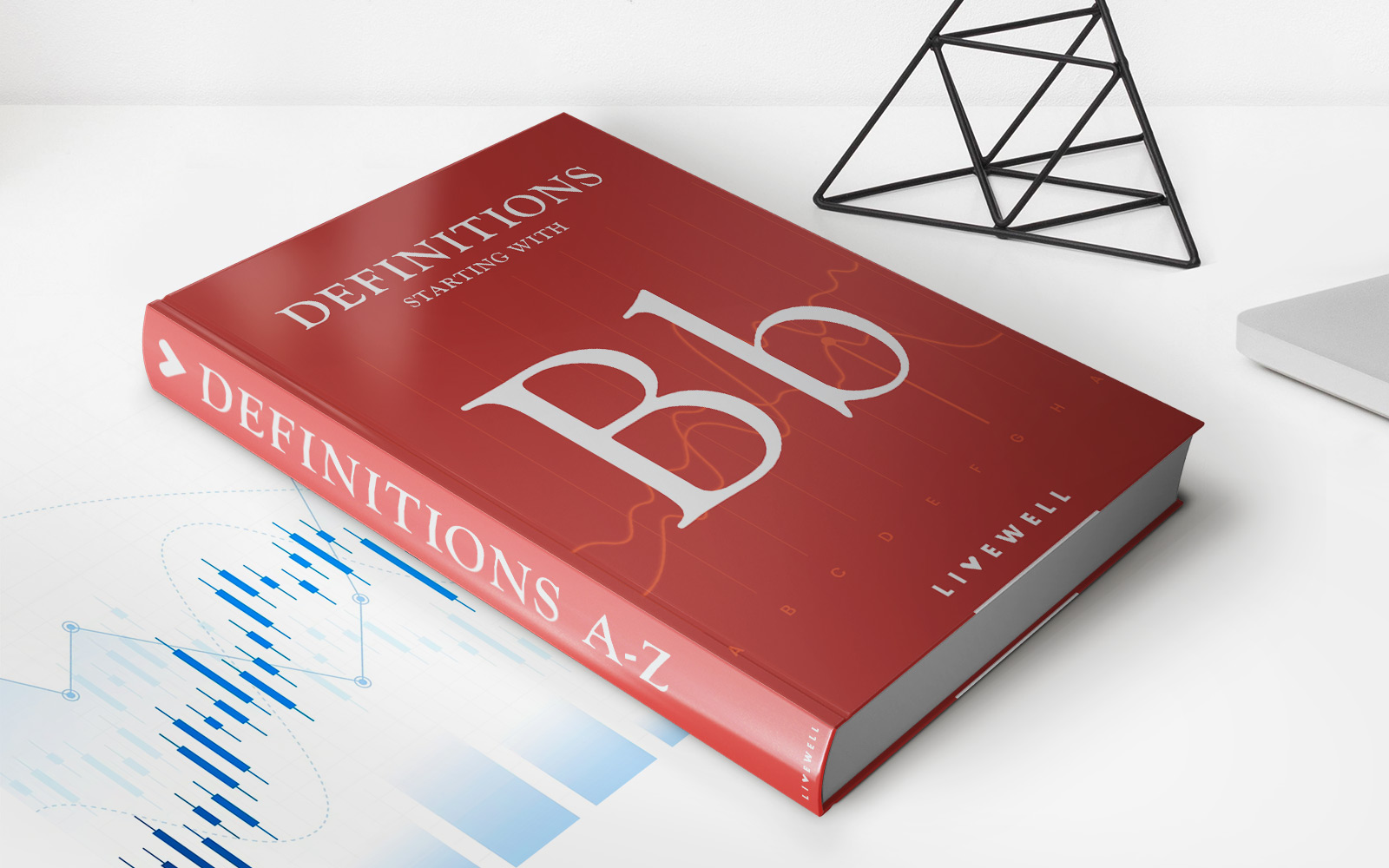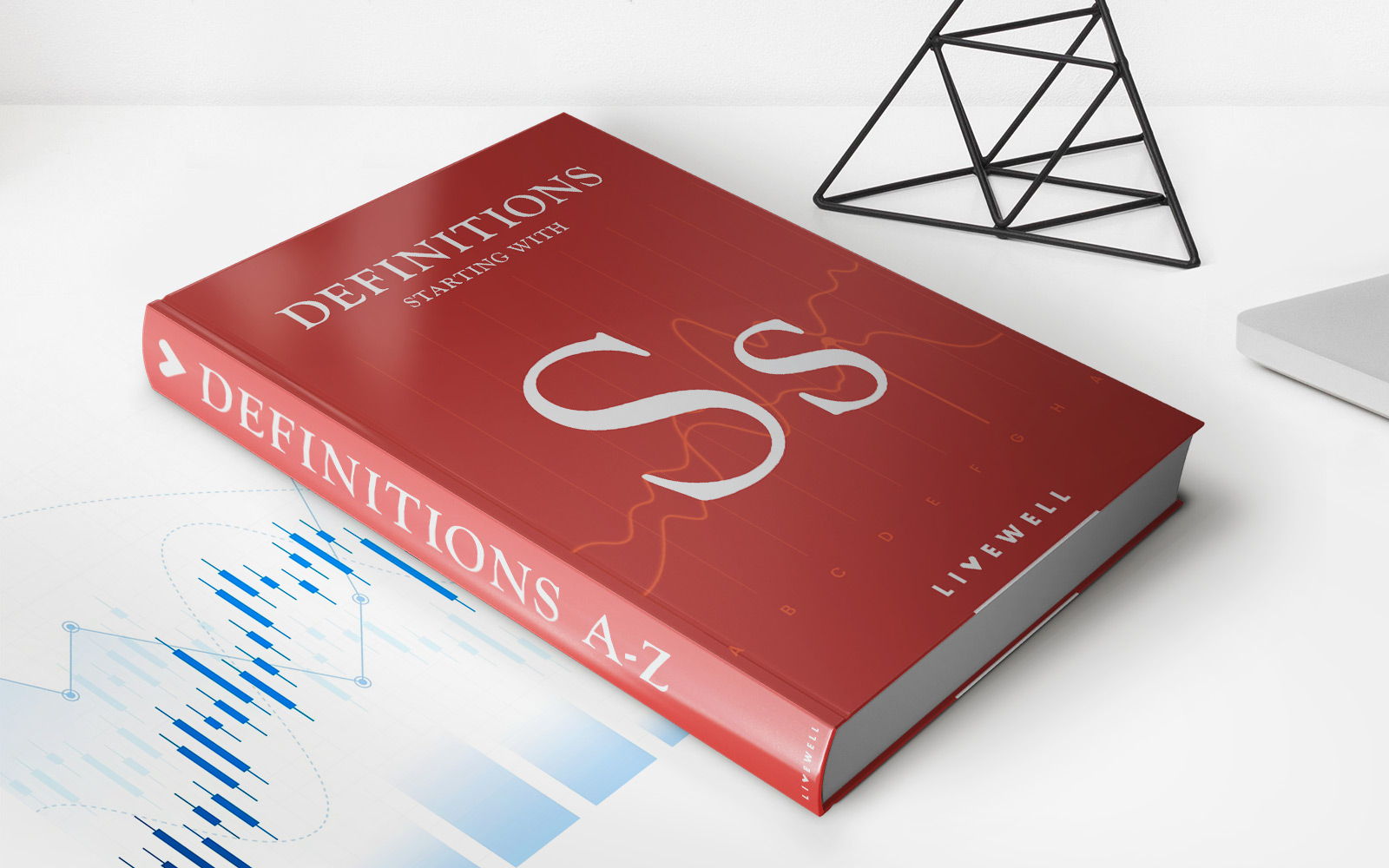Home>Finance>How To Know If My Student Loans Are Private Or Federal


Finance
How To Know If My Student Loans Are Private Or Federal
Modified: January 20, 2024
Learn how to determine if your student loans are private or federal. Understand the key differences and take control of your finance.
(Many of the links in this article redirect to a specific reviewed product. Your purchase of these products through affiliate links helps to generate commission for LiveWell, at no extra cost. Learn more)
Table of Contents
- Introduction
- The Difference Between Private and Federal Student Loans
- How to Determine if Your Student Loans are Private or Federal
- Check the Source of Your Loan
- Review Your Loan Documents
- Contact Your Loan Servicer
- Use the National Student Loan Data System (NSLDS)
- Consult with Your School’s Financial Aid Office
- Identify Federal Loan Characteristics
- Identify Private Loan Characteristics
- Consider Consolidation or Refinancing Options
- Conclusion
Introduction
When it comes to managing your student loans, one essential step is determining whether your loans are private or federal. Understanding the difference between these two types of loans is crucial, as it can impact your repayment options, interest rates, and overall financial strategy.
Private student loans are issued by private financial institutions such as banks or credit unions, while federal student loans are funded and regulated by the U.S. Department of Education. Each type of loan has its own set of terms and conditions, so it’s important to know which category your loans fall into.
Identifying whether your loans are private or federal can seem challenging, especially if you have multiple loans from different sources. However, there are several methods you can use to determine the type of loans you have and gain a clearer understanding of your repayment options.
In this article, we will walk you through the steps you can take to figure out if your student loans are private or federal. By following these guidelines, you will have a better understanding of your loan portfolio and be better equipped to make informed decisions about your financial future.
The Difference Between Private and Federal Student Loans
Before diving into the methods of determining your loan type, it’s important to understand the key differences between private and federal student loans. These differences can have a significant impact on your repayment options, interest rates, and borrower protections.
Private student loans are issued by private financial institutions and are not subsidized or guaranteed by the federal government. The terms and conditions of private loans can vary widely based on the lender, and interest rates are typically higher than federal loans. Private loans also have fewer repayment options and may not offer income-driven repayment plans or loan forgiveness programs.
On the other hand, federal student loans are funded and regulated by the U.S. Department of Education. These loans offer more borrower protections and flexible repayment options. Federal loans have fixed interest rates set by the government, and some loans may even have subsidized interest, meaning the government pays the interest while you’re in school or during certain deferment periods.
One of the most significant differences between private and federal loans is the fact that federal loans may qualify for various forgiveness and cancellation programs. These programs can help borrowers who work in certain public service professions or who qualify for income-driven repayment plans to have a portion of their loans forgiven after a certain number of qualifying payments.
Understanding these key distinctions will help you better evaluate your student loan options and make informed decisions about repayment and financial planning.
How to Determine if Your Student Loans are Private or Federal
Now that you understand the difference between private and federal student loans, let’s explore the various methods you can use to determine the type of loans you have:
- Check the Source of Your Loan: Begin by identifying the financial institution or lender that provided your loan. If it is a well-known private bank or credit union, it is likely a private loan. On the other hand, if the loan was disbursed by the U.S. Department of Education or a federal student loan servicer, it is most likely a federal loan.
- Review Your Loan Documents: Take some time to review your loan documents and promissory notes. This paperwork will provide crucial information about your loan, including whether it is a federal or private loan. Look for any mention of government programs or federal loan terms to indicate a federal loan. If your loan documents do not specify, proceed to the next step.
- Contact Your Loan Servicer: Reach out to the entity that services your loan. They can confirm the type of loan you have and provide further information about repayment options and borrower benefits. Contact information for your loan servicer should be listed on your loan statements or on the student loan portal you use to manage your loans.
- Use the National Student Loan Data System (NSLDS): The NSLDS is an online database that provides information about your federal student loans. By creating an account on the NSLDS website and entering your personal information, you can access a comprehensive overview of your federal loan portfolio, including loan types, disbursement dates, and loan servicer contact details.
- Consult with Your School’s Financial Aid Office: Your school’s financial aid office is a valuable resource for understanding the types of loans you have. They can help you identify whether your loans are federal or private, as well as provide guidance on repayment options and loan counseling.
- Identify Federal Loan Characteristics: Familiarize yourself with the characteristics of federal student loans. These include standardized interest rates, the possibility of subsidized interest, flexible repayment plans (such as income-driven repayment), and eligibility for forgiveness or cancellation programs.
- Identify Private Loan Characteristics: Private loans often have variable interest rates, stricter repayment terms, and fewer borrower benefits compared to federal loans. Private loans typically do not offer income-driven repayment plans or eligibility for federal loan forgiveness programs.
- Consider Consolidation or Refinancing Options: If you have both federal and private loans, you may want to explore loan consolidation or refinancing options. This can simplify your repayment process and potentially lower your interest rate. However, it’s essential to weigh the potential benefits against the loss of federal loan benefits before making a decision.
By utilizing these methods, you can gain a clear understanding of whether your student loans are private or federal. This knowledge will empower you to make informed decisions regarding repayment strategies, loan consolidation, and exploring potential forgiveness programs.
Check the Source of Your Loan
One of the first steps in determining if your student loans are private or federal is to check the source of your loan. The lender or financial institution that provided the loan can often indicate whether it is a private or federal loan.
If you received your loan from a well-known private bank, credit union, or online lender, it is likely a private student loan. These lenders operate independently of the government and offer private student loans with their own terms and conditions.
On the other hand, if your loan was disbursed by the U.S. Department of Education or a federal student loan servicer such as FedLoan Servicing, Navient, or Nelnet, it is most likely a federal student loan. These loans are funded and regulated by the federal government and offer certain benefits and protections for borrowers.
When checking the source of your loan, review your loan documentation or statements for the name of the lender or financial institution. You can also check your loan disbursement history to see if the funds came directly from the federal government or from a private lender.
If you are unsure about the source of your loan based on the lender’s name, you can conduct further research to determine whether the lender primarily offers private or federal student loans. Online reviews and the lender’s website may provide insights into the types of loans they offer.
Remember that you may have multiple loans from different lenders, so it’s essential to check the source of each loan individually. This will help you differentiate between any private loans and federal loans in your portfolio.
If you determine that you have both private and federal loans, it’s important to keep track of each loan separately. This will ensure that you understand the terms, repayment options, and benefits associated with each loan type.
Checking the source of your loan is a valuable starting point in identifying whether your student loans are private or federal. However, if this method alone does not provide conclusive information, there are additional steps you can take to determine the type of loans you have.
Review Your Loan Documents
Another important step in determining whether your student loans are private or federal is to thoroughly review your loan documents. Your loan agreement, promissory notes, and other loan-related paperwork can provide valuable information about the type of loan you have.
Start by gathering all your loan documents in one place. This includes any correspondence or paperwork you received when you originally took out your loan. Review each document carefully, paying attention to any references to government programs or federal loan terms.
If your loan documents explicitly mention terms such as Federal Direct Loan, Perkins Loan, Stafford Loan, or Federal Family Education Loan, it is a strong indication that you have a federal loan. These terms are often associated with federal student loans issued by the U.S. Department of Education.
Private loans, on the other hand, may not mention federal loan programs or use specific terminology associated with government-backed loans. Instead, they may include the name of the private lender and any unique terms or conditions specific to that loan.
As you review your loan documents, look for information about interest rates, repayment options, forbearance or deferment policies, and any borrower benefits or loan forgiveness programs. These details can help you further differentiate between private and federal loan characteristics.
If you still have doubts about the type of loans you have after reviewing your documents, don’t hesitate to reach out to your loan servicer or lender for clarification. They can provide additional information and help you understand the terms and conditions of your loan.
Remember to keep your loan documents and paperwork in a safe and easily accessible place. These documents will be essential for reference throughout your loan repayment journey and may be required for any future loan-related inquiries or applications you need to make.
By thoroughly reviewing your loan documents, you can gain valuable insights into the type of loans you have and the corresponding repayment options and benefits available to you.
Contact Your Loan Servicer
If you’re still unsure about the type of student loans you have after checking the source and reviewing your loan documents, contacting your loan servicer is a crucial step. Your loan servicer is the company responsible for managing your loan and handling your loan repayment process.
Start by locating the contact information for your loan servicer. You can find this information on your loan statements, in your online portal, or by checking the National Student Loan Data System (NSLDS) website.
Once you have the contact information, reach out to your loan servicer via phone or email. Explain your situation and express your desire to determine whether your loans are private or federal. The loan servicer’s customer service representatives are trained to assist borrowers and can provide clarification on the type of loans you have.
When speaking with your loan servicer, be prepared to provide them with your personal information to verify your identity and loan details. They may ask for your social security number, date of birth, or other identifying information to access your account.
Your loan servicer can confirm the type of loans you have and provide additional information about your loan terms, repayment options, and borrower benefits. They can also inform you about any available loan forgiveness or discharge programs specific to your loan type.
It’s important to note that if you have multiple loans, you may have different loan servicers for each one. Each loan servicer may handle different types of loans, so it’s essential to contact each servicer individually to gather complete information about your loan portfolio.
Keep a record of your interactions with your loan servicers, including the names of the representatives you speak with, the date and time of the call or email, and any information provided to you. This documentation will be helpful for future reference and in case any discrepancies or issues arise with your loans.
By contacting your loan servicer, you can obtain accurate information about the type of student loans you have and gain a better understanding of your repayment options and borrower benefits.
Use the National Student Loan Data System (NSLDS)
The National Student Loan Data System (NSLDS) is a valuable online database that provides comprehensive information about federal student loans. It is a secure system operated by the U.S. Department of Education, and it can help you determine if your loans are federal.
To access the NSLDS, visit the official website and create an account using your Federal Student Aid (FSA) ID. If you don’t have an FSA ID, you can create one on the Federal Student Aid website. Once you have your FSA ID, you can log in to the NSLDS portal.
Once logged in, you will be able to view detailed information about your federal student loans, including loan types, loan amounts, disbursement dates, loan servicers, and current balances. This will give you a comprehensive overview of your federal loans and help you determine if any of your loans are private.
Keep in mind that the NSLDS only provides information about federal student loans. It does not include any private loans you may have. However, by comparing the information from the NSLDS with your loan documents or other sources, you can identify which loans are federal and which may be private.
If you have trouble accessing the NSLDS or encounter discrepancies in the information provided, contact the Federal Student Aid Information Center for assistance. They can help resolve any technical issues or provide guidance on how to interpret the information displayed in the NSLDS.
Using the NSLDS is an effective way to determine if your student loans are federal. This resource provides accurate and up-to-date information about your federal loan portfolio, allowing you to make informed decisions about repayment strategies and explore potential forgiveness programs available for federal loans.
Consult with Your School’s Financial Aid Office
If you’re still uncertain about the type of student loans you have after exploring the previous methods, it’s recommended to reach out to your school’s financial aid office for assistance. The financial aid office is a valuable resource that can help you navigate the complexities of student loans and provide guidance tailored to your specific situation.
Start by locating the contact information of your school’s financial aid office. This information can usually be found on the school’s website or in any paperwork you received from the financial aid office during your time as a student.
Contact the financial aid office via phone or email and explain your predicament. They are experienced professionals who can help determine whether your loans are private or federal based on their knowledge of the aid programs they administer. They may request relevant details about your loans such as loan account numbers or other identifying information.
The financial aid office can access your student aid records and provide information about the loan types you borrowed during your time at the institution. They can clarify whether your loans are private or federal, as well as provide guidance on repayment options, loan consolidation, and potential forgiveness programs.
Furthermore, the financial aid office can offer insight into any school-specific loan programs or scholarships you may have received. Understanding these details can help you create a comprehensive repayment plan and take advantage of any available resources.
It’s important to note that the financial aid office may have different protocols or availability during different times of the year. Be mindful of their office hours and any peak seasons when they may be busier assisting current students. Patience and persistence can help ensure you receive the information you need.
Consulting with your school’s financial aid office can provide you with personalized assistance in determining the types of loans you have. They will help alleviate any confusion and provide you with accurate information to make informed decisions about managing your student loans.
Identify Federal Loan Characteristics
Identifying the characteristics of federal student loans can help you determine if your loans fall into this category. Here are some key features and characteristics that are typically associated with federal loans:
- Fixed Interest Rates: Federal student loans have fixed interest rates that are determined by the government. These rates are generally lower than the interest rates offered by private loans.
- Subsidized Interest: Some federal loans, such as Direct Subsidized Loans, offer subsidized interest. This means that the government pays the interest on the loan while you are in school, during certain deferment periods, and during the grace period after graduation.
- Flexible Repayment Options: Federal loans often offer a variety of repayment plans, including income-driven repayment options that adjust your monthly payment based on your income and family size.
- Deferment and Forbearance Options: Federal loans typically have more generous deferment and forbearance options compared to private loans. These options allow you to temporarily postpone or reduce your loan payments under specific circumstances, such as financial hardship or returning to school.
- Potential Loan Forgiveness Programs: Certain federal loan programs offer loan forgiveness or cancellation options for eligible borrowers. Examples include Public Service Loan Forgiveness (PSLF) for individuals working in public service and Teacher Loan Forgiveness for qualifying teachers in low-income schools.
- Standardized Terms and Conditions: Federal loans have standardized terms and conditions set by the federal government. This ensures consistency and transparency for borrowers, making it easier to understand your repayment obligations.
While not all federal loans may exhibit all of these characteristics, they are common features associated with this loan type. Reviewing your loan details and matching them with these characteristics can provide further confirmation that your loan is federal.
Remember that different federal loan programs might have slightly different terms and conditions, so it’s essential to closely examine your specific loan documents and any correspondence from your loan servicer to determine the exact characteristics of your federal loans.
By identifying the characteristics of your loans and comparing them to the features of federal student loans, you can confidently determine if your loans are indeed federal and take advantage of the repayment options and benefits they offer.
Identify Private Loan Characteristics
To determine if your student loans are private, it’s important to look for specific characteristics commonly associated with private loans. While individual private loan terms may vary, here are some key features that can help you identify private loan characteristics:
- Variable Interest Rates: Private student loans often come with variable interest rates. Unlike federal loans, which have fixed interest rates set by the government, private loan interest rates can fluctuate over time based on market conditions or your creditworthiness.
- Lack of Subsidized Interest: Private loans do not typically offer subsidized interest. This means that interest begins accruing on your loan as soon as it is disbursed, and you are responsible for paying the interest even while you are in school or during deferment periods.
- More Limited Repayment Options: Private loans usually have fewer repayment options compared to federal loans. Income-driven repayment plans and loan forgiveness programs are typically not available for private loans. Repayment terms may be less flexible and may not accommodate changes in your financial situation.
- Less Generous Deferment and Forbearance Options: Private loans often have more limited deferment and forbearance options compared to federal loans. If you encounter financial hardship or need to pause your loan payments, private lenders may offer fewer options or may require you to make interest-only payments during deferment or forbearance.
- Lack of Federal Loan Protections: Private loans generally do not come with the borrower protections and benefits offered by federal loans. These protections, such as potential loan forgiveness programs, income-driven repayment options, and Public Service Loan Forgiveness, are specific to federal loans.
- Varied Terms and Conditions: Private loans can have unique terms and conditions, including repayment lengths, grace periods, and origination fees, which differ from federal loan standards. It’s important to carefully review your loan agreement and consult with your private lender to understand your specific loan terms.
Remember that private loans may vary from lender to lender, so it’s crucial to review your loan documents and communication from your lender to identify the specific characteristics of your loans.
By identifying these private loan features and comparing them to the characteristics of your loans, you can confirm whether your loans are indeed private. This knowledge will help guide your repayment strategy and ensure that you are aware of the options available to you.
Consider Consolidation or Refinancing Options
Once you have determined the types of loans you have – whether they are private or federal – it’s worth considering consolidation or refinancing options to streamline your repayment process or potentially improve your loan terms.
Consolidation: If you have multiple federal student loans, you can consolidate them into a single Direct Consolidation Loan. This can simplify repayment by combining your loans into one monthly payment. Consolidation also offers the convenience of a fixed interest rate and potentially extends your repayment term, which can lower your monthly payment amount. However, it’s important to note that consolidation only applies to federal loans and may cause you to lose certain borrower benefits, such as interest subsidies or forgiveness programs. Therefore, carefully weigh the pros and cons before opting for consolidation.
Refinancing: If you have both private and federal loans, you may consider refinancing your loans with a private lender. This involves taking out a new loan to pay off your existing loans, potentially with a lower interest rate or better repayment terms. Refinancing can save you money on interest payments over the life of the loan, but it’s important to carefully evaluate the terms and conditions offered by private lenders. Keep in mind that by refinancing federal loans with a private lender, you will lose federal loan benefits, such as income-driven repayment options and loan forgiveness programs.
Before deciding to consolidate or refinance your loans, assess your financial situation, and consider the potential benefits and drawbacks of each option. Evaluate factors such as interest rates, loan terms, monthly payments, and any associated fees. If you have federal loans, be sure to weigh the loss of federal loan benefits against the potential savings or simplification of repayment.
If you choose to consolidate or refinance, research different lenders to find the best possible rates and terms. Compare offerings from multiple lenders and consider seeking the advice of a financial professional to ensure you make an informed decision.
It’s important to note that consolidating or refinancing your student loans is not the right choice for everyone. Make sure to carefully assess your unique situation and consider the impact on your repayment strategy and any potential loss of federal loan benefits before proceeding.
By considering consolidation or refinancing options, you can potentially simplify your loan repayment and explore opportunities to save money or improve your loan terms. However, it’s essential to carefully weigh the pros and cons of these options before making a decision.
Conclusion
Identifying whether your student loans are private or federal is a crucial step in effectively managing your loan repayment. By understanding the differences between these loan types, you can make informed decisions about your financial strategy and take advantage of available options and benefits.
Throughout this article, we’ve discussed several methods to determine the type of loans you have. Checking the source of your loan and reviewing your loan documents can provide initial clues, while reaching out to your loan servicer and using the National Student Loan Data System (NSLDS) can offer more definitive answers.
Consulting with your school’s financial aid office can also provide valuable guidance and personalized assistance. Additionally, familiarizing yourself with the characteristics of federal and private loans can help further differentiate between the two.
Once you have identified your loan type, you can explore consolidation or refinancing options if necessary. However, it’s essential to carefully consider the potential impact on your loan terms and borrower benefits, particularly if you have federal loans.
Remember, managing your student loans requires careful planning and understanding of your specific circumstances. Make sure to stay informed about your loan details, repayment options, and any available forgiveness or repayment assistance programs.
Ultimately, by determining whether your student loans are private or federal, you can develop a clear repayment strategy that aligns with your financial goals and take steps toward achieving financial security and freedom from student loan debt.














